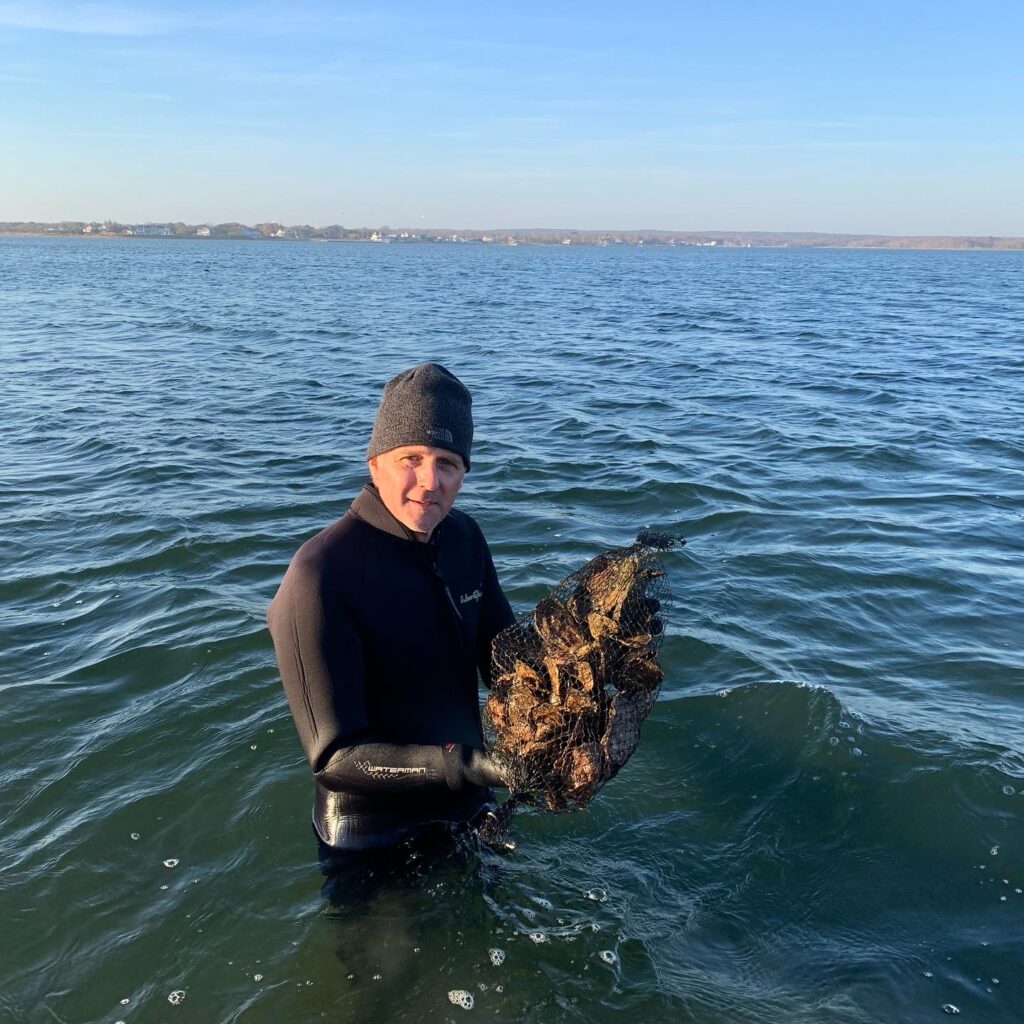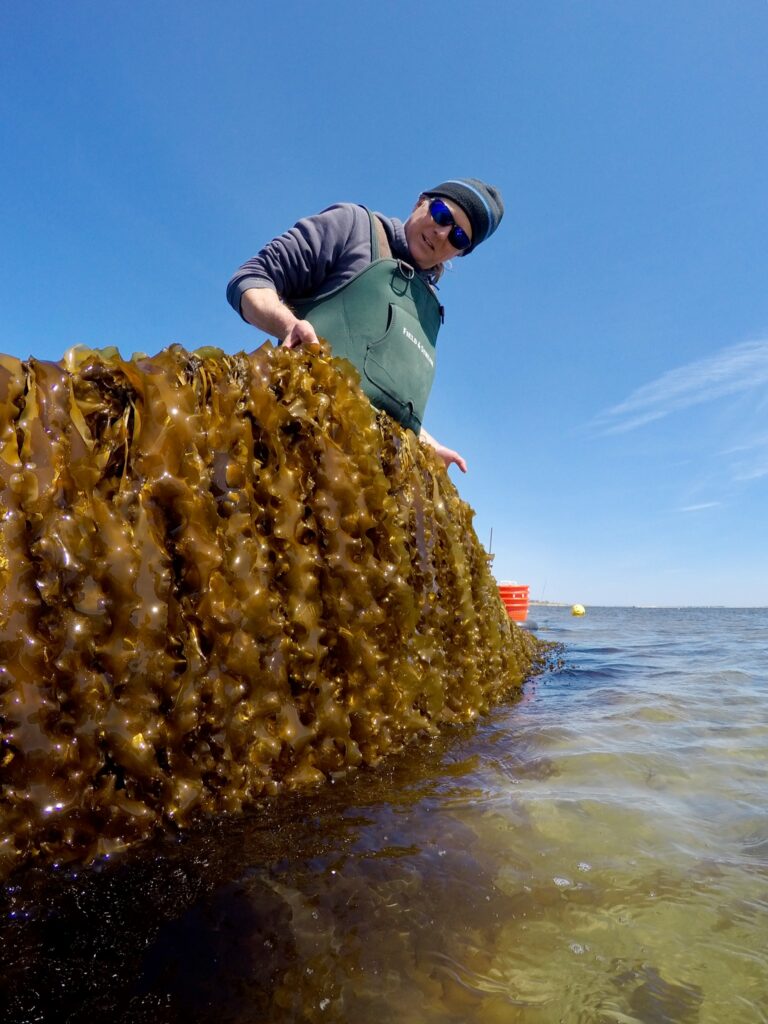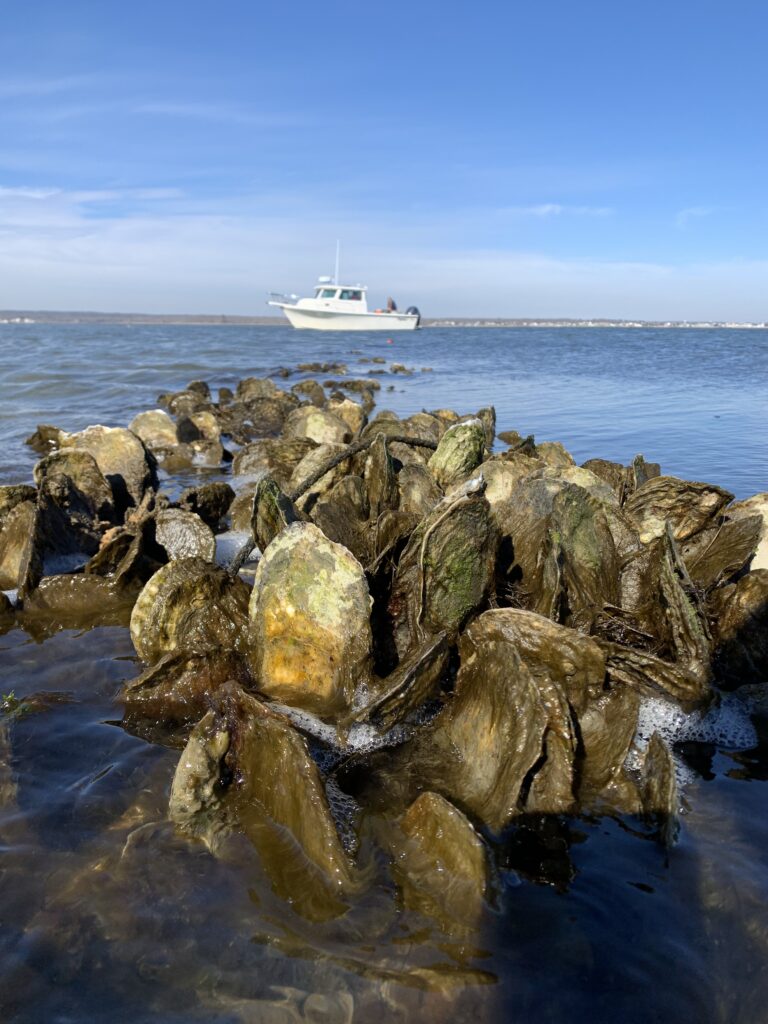For Michael Doall, the salty waters surrounding Long Island have always harbored exploration and entertainment. Growing up along the coast, Doall spent countless days fishing, surfing, and swimming at the beach, partly because his mother let him skip school on especially lovely spring afternoons. “From birth one of my passions has been the ocean,” Doall says, a lasting enthusiasm that ultimately led to his career in regenerative aquaculture and shellfish restoration. While his days of skipping class to bum it at the beach may be over, you can still find Doall in the bays of Long Island, dedicating hours to researching and reviving the marine organisms that provide innumerable benefits to the ecosystem he calls home.
At the beginning of Doall’s education in marine biology, regenerative aquaculture—the farming of marine species in open waters to bolster habitat quality—was not remotely common in the U.S., let alone something on Doall’s mind. But, having always had gardens growing up, Doall found that the field of ocean aquaculture brought together his passions for the ocean and for growing things.
Doall was first exposed to regenerative aquaculture 20 years ago while managing a research service facility in Long Island. The Nature Conservancy had started a hard clam and oyster restoration program in Long Island’s Great South Bay and reached out to Doall for his analytic expertise. Bivalves, such as clams and oysters, are essential to ocean ecosystems, because they suck up excess nutrients and sediment from waterways, improving water quality and preventing harmful algal blooms. At the Nature Conservancy, Doall grew shellfish in cages across the Bay to study how different marine environments would support these species.

There, he realized how much he enjoyed growing the oysters and rebuilding marine ecosystems, so he dove deeper into open water aquaculture by establishing some of the first oyster restoration projects in New York Harbor (NYH). While working at these sites, he aimed to use oysters as solely an environmental tool—the harbor’s pollution meant organisms wouldn’t be safe for consumption—but later he “had the epiphany that oysters do the same thing in an aquaculture setting as they do in nature.” That is, by growing oysters for human consumption, these filter feeders would naturally improve water quality by consuming excess nutrients and provide a sustainable source of fresh seafood at the same time.
Inspired, Doall started his own oyster farm in 2008: Montauk Shellfish Company. He took a lot of pride in being an oyster farmer, stating that “one of the most important activities you can do is to grow food and feed your community.” And feed his community he did. Doall was on the cusp of an “oyster renaissance” and would witness Montauk take off beyond his expectations.
During his time as an oyster farmer, Doall took a trip up to Maine and was introduced to a new sea crop that would later inspire his research: Kelp. Doall was interested in crop diversification for his farm and learned from some of the first U.S. kelp farmers that this sea veggie is a great complement to shellfish because of their opposite growth seasons (kelp in the winter, shellfish in the summer).
Though he sold his farm in 2017, Doall still very much considers himself a farmer in his current role as Associate Director for Bivalve Restoration and Aquaculture at Stony Brook University. As a scientist, Doall is well positioned to pursue kelp through research projects in Long Island waters that do not yet allow commercial kelp farming due to a decade-long battle for obtaining permits and expanding processing capacity.
Over the past four years, Doall has been tirelessly dedicated to bringing the benefits of kelp to Long Island. As with oysters, kelp sucks excess nitrogen out of the water, helping to keep our oceans clean. Combining the two creatures creates a marine-cleaning superteam to counteract the eutrophication—excessive nutrient pollution—that has long plagued Long Island. Further, kelp captures carbon dioxide from the water column as it photosynthesizes. That carbon gets removed from the ocean when the kelp is harvested, making seaweed a tool for fighting local ocean acidification that threatens the health of our marine ecosystems, including many of the species we depend on for food. Doall developed a specialized technique for growing kelp in the shallow coastal waters of Long Island that are only knee or waist deep, as opposed to traditional kelp farming that is done in much deeper waters. He was impressively able to grow 12-foot-long kelp fronds in only two feet of water. This compact feat can help not only shallow-water ocean farmers but also other species residing in shallow bays, where poor water flow otherwise means poor water quality.

The nutrient-extraction capabilities of farming kelp are especially important in Long Island. As Doall says of his hometown, “Long Islanders love their lawns and golf courses.” He tells me about the truckloads of fertilizer that are brought in during the warmer months, dumping nitrogen all across the island. A farmer at heart, Doall envisions growing forests of kelp along the coast to absorb the nitrogen runoff from shore. Once harvested, this kelp can be developed into nitrogen-rich fertilizer, equipped with other micronutrients and biostimulants, that can be used throughout the community. It would be a closed nitrogen loop, lowering the demand for imported fertilizer and delivering environmental and economic benefits to the island. Doall plans to explore such a system’s feasibility this summer through garden studies on kelp-based fertilizer’s benefits.
Doall’s dedication to restoring his home seas has carried him through a variety of challenges. Despite support from large environmental groups such as the Nature Conservancy and Pew Charitable Trust, regenerative aquaculture must compete with a variety of stakeholders on the water. Recreational boaters, commercial fishermen, and even wind surfers have opposed Doall’s projects.
“In the end, all these groups recognize the value of regenerative farming, but a lot of people don’t want it in an area where they’re doing something,” he says. There is also a so-called “social carrying capacity” for aquaculture: once over ~5% of the coastline is occupied by ocean farmers, “people start freaking out” and are quick to complain about the oyster farms visible from their backyard. Nevertheless, Doall has found that a healthy, bustling ocean can unify disparate marine interests.

At the end of the day, Doall believes in his mission to support ocean farming and rebuild shellfish populations in his home waters. While he knows his focal solutions to climate change are not the only solutions, the benefits of regenerative aquaculture and shellfish restoration cannot be ignored. Aquaculture projects secure jobs and income while nutrient bioextraction revitalizes the ecosystem, a win-win for coastal economies and environments. Moreover, because of overfishing and marine habitat degradation, fishing communities that have long relied on the ocean for their sense of identity are losing their cultural ties. Luckily, according to Doall, “regenerative aquaculture is a way to bring that cultural identity back…so there’s a win-win-win.”
You will always find Doall working away in the waters of Long Island, happy as a clam, because “When do you plant a victory flag? Never.” The fight for climate-resilient solutions never stops, but local, restorative projects like these continue to provide hope for a greener future.
Awesome article..Our planet needs more visionaries like Mike Doall!